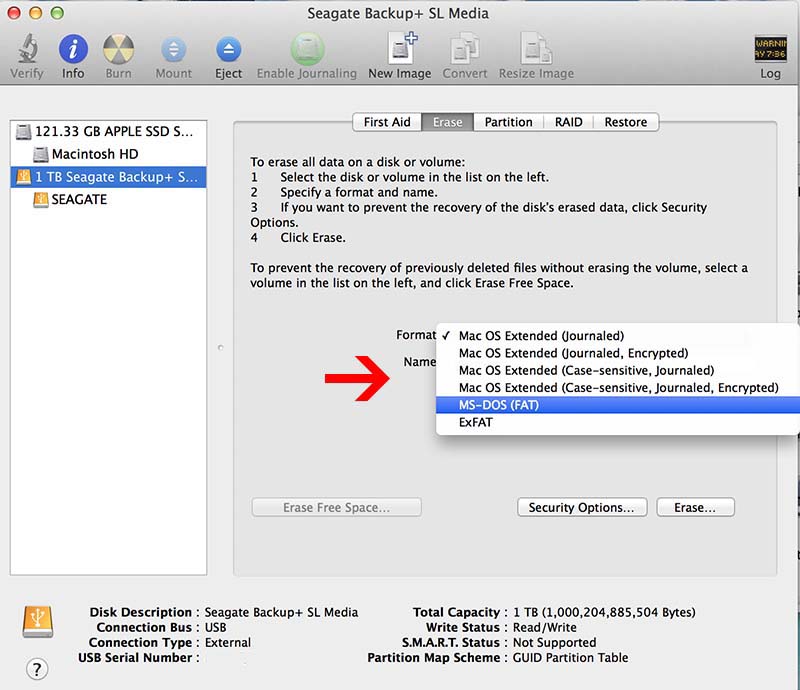- After Apple decided to redesign the MacBook Pro lineup in 2016, this meant the death of the SD card slot. Most MacBook models previous to this iteration have the slot built into the side, but if not you'll need an extra piece. Depending on which version of the Mac you own, you will need to get a USB SD card reader.
- To format the USB drive in Disk Utility: Step 1. Go to Utilities and open Disk Utility. Select the not showing up USB flash drive in the Disk Utility sidebar. Click Erase on the top. Finish the necessary information (name, format, and scheme) to format the USB flash drive. Update your macOS and firmware.
- How to Wipe Your Hard Drive. Just format the drive, duplicate a large file (as a movie) to fill it, fill the rest duplicating a smaller file and so on until no free space is left, format again.
- Most of mac users found that the pendrive or hard drive is readable but not writeable in Mac. This is because of the pendrive or hard drive has been formatte.
Most users use Disk Utility to erase a disk or hard drive. But some Mac users might need to erase them from the command line on Mac OS. To do that, the only thing you need is a bit of precise syntax to make sure that you are erasing the proper disk.
Here I'll show you how you can erase and format a disk using the command line. Working with Terminal. Start off by running the following command in the command line: Diskutil list. This is going to list all the mounted drives on your Mac. Once you have found the proper drive to erase, just copy its identifier so you can use it for the next command.

Here I'll show you how you can erase and format a disk using the command line. Windows docker run.
Working with Terminal
Start off by running the following command in the command line: Diskutil list Itunes for mac download latest version.

This is going to list all the mounted drives on your Mac.
Once you have found the proper drive to erase, just copy its identifier so you can use it for the next command. Then pick a name and a system format type. This is the syntax we need: Diskutil eraseDisk FILESYSTEM DISKNAME DISKIDENTIFIER

Here I'll show you how you can erase and format a disk using the command line. Windows docker run.
Working with Terminal
Start off by running the following command in the command line: Diskutil list Itunes for mac download latest version.
This is going to list all the mounted drives on your Mac.
Once you have found the proper drive to erase, just copy its identifier so you can use it for the next command. Then pick a name and a system format type. This is the syntax we need: Diskutil eraseDisk FILESYSTEM DISKNAME DISKIDENTIFIER
How To Format A Flash Drive On Macbook Pro
Let's say the disk I want to erase has '/dev/disk5s2' as its identifier and I'm going to use Mac OS Extended Journaled (JHFS+) as the system format type and name it 'Empty'. The syntax is going to look like this: Diskutil eraseDisk JHFS+ Empty /dev/disk5s2
It's important to keep in mind that if you run the eraseDisk command, the target disk is going to lose all its data, so make sure you are erasing the proper disk. Get docker host.
If you need different system format types, here are a few references you could use instead of JHFS+:
How To Format Flash Drive Using Macbook Pro
- Mac OS Extended: HFS+
- MS-DOS fat32: FAT32
- ExFAT: ExFAT
